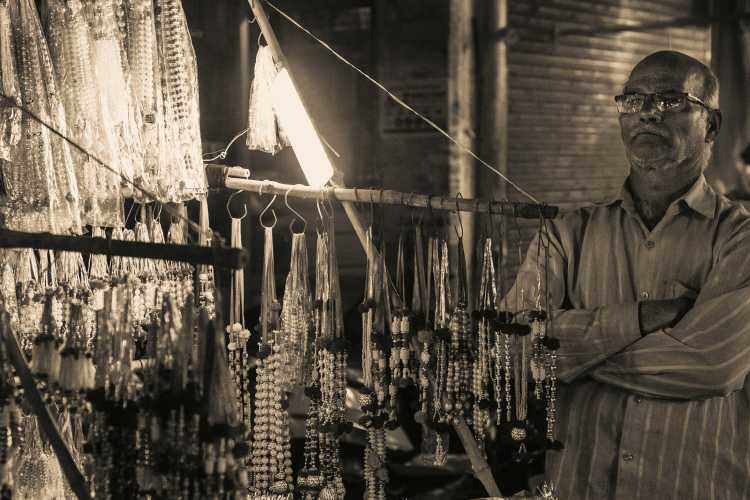The great India festive slowdown: Despite the season of major festivals like Navratri and Diwali — typically a period of booming sales of cars, FMCG, and white goods — the Indian market has slumped, dampening the festive cheer across several sectors. Rising prices and stagnant real wage growth have restricted consumer spending, revealing deeper pain points within the Indian economy. While predicting the duration of this downturn is challenging, high inflation and delayed rate cuts are likely to continue affecting demand.
Economists foresee tepid urban demand persisting, driven by lower salary increases, waning pent-up demand, high interest rates, and restricted credit conditions. Real earnings for urban workers, adjusted for inflation, have slowed, with real wage growth significantly reduced over the past year. Lower salary increments and fewer jobs are contributing to this stagnation, adding to the broader economic malaise.
READ | FDI norms: India seeks to reclaim global investment spotlight
Festive slowdown reflects consumer strain
The urban FMCG sector — a key indicator of consumer confidence — has seen demand sharply decline, with growth in sales dropping from 10.1% in Q1 FY24 to just 2.8% in Q1 FY25. Middle- and lower-income consumers are feeling the squeeze as the costs of essential goods rise. Data from the National Statistical Office (NSO) shows food inflation spiked to 9.2% in September, up from 5.7% in August and 5.4% in July. Temporary factors such as excessive monsoon rains have further curbed out-of-home consumption.
FMCG is often a bellwether for economic health; when consumers struggle to afford daily essentials, the economy is in troubled waters. The festive slowdown is evident from Q2 reports by top industry CEOs who highlight the significant drop in demand within the lower urban market segments, particularly in popular and mass segments. Rising food prices have curtailed discretionary spending among the urban middle class, limiting purchases outside essential needs.
Nestle India’s leadership has attributed these trends to a “shrinking middle class,” which is dampening expenditure. On a brighter note, rural demand shows signs of recovery, though urban areas still dominate, accounting for nearly two-thirds of FMCG sales.
Auto industry loses Diwali spark
The auto sector, traditionally buoyed by the festive season, has also encountered headwinds. Maruti Suzuki Chairman RC Bhargava recently noted that the market for vehicles under ₹10 lakh is shrinking, signalling a troubling trend for automakers. In 2018-19, this segment constituted 80% of the passenger vehicle market, but rising costs have eroded demand.
Similarly, Tata Motors reported a slight decline in passenger vehicle sales in October, selling 48,423 units, down 0.42% from the same period last year. Domestic sales dropped to 48,131 units, with exports down by 3% and electric vehicle sales declining by 2%. Tata’s stock prices have stagnated, reflecting the decline in overall sales.
Premiumisation: The rise of costly goods
While mass-market is witnessing a festive slowdown, there has been a notable rise in premium products, a phenomenon known as “premiumisation,” where high-income consumers opt for higher-priced items despite economic challenges. The Boston Consulting Group (BCG) and the Retailers Association of India (RAI) report that although India’s retail market has seen subdued growth, declining by 5-10% year-over-year, shifts in consumer behaviour, including online shopping and premiumisation, have contributed to reduced retail footfall.
Premiumisation is evident across sectors like automobiles, white goods, and FMCG. In the white goods sector, consumers increasingly prefer larger, higher-quality items, like big-screen televisions, despite lower store footfall. Mass-market products, however, face a dull response, highlighting the widening divide in consumer spending.
Jewellery, especially gold, remains popular during festive times, though trends are shifting. Light-weight gold jewellery for gifting is on the rise, and silver has seen a sharp increase in sales, driven by its relatively lower cost and industrial demand, particularly from the electric vehicle sector. Silver sales rose by 30-35%, underscoring its popularity amid record-high gold prices.
India’s retail market displays a paradox. While economic challenges persist, a segment with higher disposable incomes continues to drive demand for premium goods. This divide between the “haves” and “have-nots” is becoming increasingly visible in the Indian economy. Policymakers must act speedily and decisively to ensure that there is enough cash in the hands of India’s middle class.

